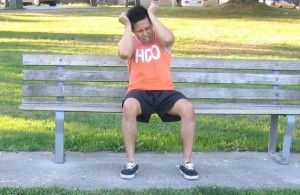Vertigo is a type of dizziness that causes a sensation such as spinning of the head is and at times, there is a feeling that everything around the surroundings are moving around in which the affected person can accidentally fall. The affected person experiences the illusion of movement, even when there is no movement going on.
Vertigo causes bouts of giddiness that can be mild, moderate or it can be intense. There two form of vertigo – the objective vertigo and the subjective vertigo. When it comes to subjective vertigo, the person feels that he/she is moving while in objective vertigo, the individuals feels that the surroundings is moving.
Vertigo can affect both men and women of all ages, but people over 60 years old are more susceptible to this condition.
Causes
- Suffering from acoustic neuroma which is a type of tumor that develops in the tissues of the nerve and can cause vertigo with ringing sensation in one of the ears and loss of hearing.
- Reduction in the flow of blood which can cause vertigo, dizziness, difficulties in walking and headaches.
Reduction in the flow of blood which can cause vertigo, dizziness, difficulties in walking and headaches. - Suffering from benign paroxysmal vertigo which is caused by false feeling of movement due to sudden movement of the head.
- Bacterial or viral infection of the inner ear and cause inflammation which can also cause vertigo.
- Migraine which causes severe headaches can cause vertigo
- After an injury caused to the neck or a head trauma can cause vertigo
Symptoms
- There is loss of hearing and ringing sensations
- Abnormal movement of the eye
- Difficulty in speaking normally
- Weakness and walking problems
- Nausea and vomiting
- Blurred vision and other problems of vision
- Reduced levels of consciousness or full loss of consciousness
- Sweating and perspiration
Treatment
- Place the hand in the forehead or fingertips can be used and the palm of the hand to the head.
- Press gently and firmly the forehead against the hand while keeping the hand from being pushed back by the head. Create a counter-pressure by resisting the force of the head using the hand and either the head or the hand should move. The pressure that is applied by both must keep them balanced by counteracting each other equally.
- Clasp in place for 10 seconds and then let go. This procedure can be repeated at least 3-5 times every day and it helps the body sense where the dizziness and vertigo will go away.
- Repeat the procedure for counter-pressure technique but place the hand behind the head and resist the backward movement of the head. Hold in that position for 10 seconds and perform this procedure at least 3-5 times every day.
- Place the hands on the sides of the head just above the ear and then perform the counter-pressure exercises on each side of the head at least 3-5 times every day.

